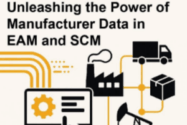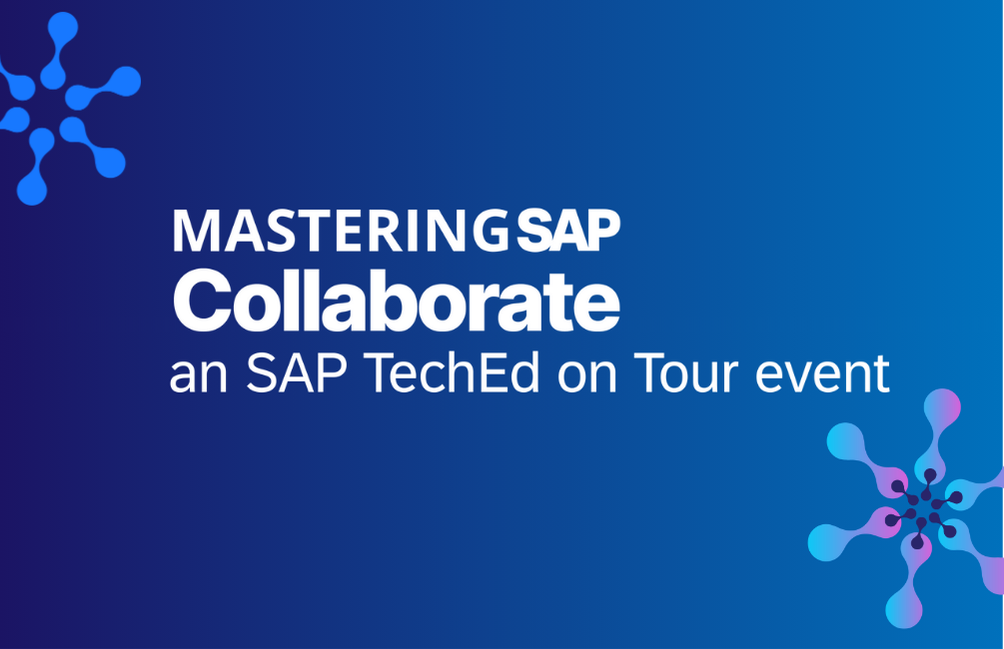SAP Supply Chain Management
SAP APO | SAP Asset Management | SAP Business Network | SAP Digital Manufacturing Cloud | SAP Digital Twin | SAP EWM | SAP IBP | SAP Inventory Management | SAP Label Printing | SAP Logistics | SAP Manufacturing | SAP Manufacturing Automation | SAP MES | SAP MII | SAP MM | SAP MRO | SAP MRP | SAP Order Management | SAP Plant Maintenance | SAP PLM | SAP Production Planning | SAP S&OP | SAP SD | SAP SPM | SAP Supply Chain Planning | SAP Track and Trace | SAP Transportation Management
Filter By
Browse By
- SAP Analytics and AI
- SAP Application Development and Integration
- All SAP Application Development and Integration
- SAP ABAP
- SAP ABAP Development Tools
- SAP ABAP Test Cockpit
- SAP API Management
- SAP BAPI
- SAP Basis
- SAP BRF
- SAP Business Application Studio
- SAP CMS
- SAP Design Studio
- SAP Development Tools
- SAP DevOps
- SAP EAI
- SAP EDI
- SAP Extension Suite
- SAP Fiori
- SAP Fiori Elements
- SAP Integration Suite
- SAP Low Code Application Development
- SAP Low Code Automation
- SAP Netweaver
- SAP Release Management
- SAP UI5
- SAP Web Application Server
- SAP Web IDE
- SAP Business Process Management
- SAP Center of Excellence
- SAP CIO
- SAP Customer Experience
- SAP Data and Data Management
- All SAP Data and Data Management
- SAP BW
- SAP BW/4HANA
- SAP Crystal Reporting
- SAP Data Archiving
- SAP Data Center
- SAP Data Governance
- SAP Data Integration
- SAP Data Migration
- SAP Data Quality
- SAP Data Services
- SAP Data Strategy
- SAP Data Visualization
- SAP Data Warehouse Cloud
- SAP DMS
- SAP Document Control
- SAP EIM
- SAP ETL
- SAP ETL Tools
- SAP HANA
- SAP HANA Administration
- SAP HANA Deployment Infrastructure
- SAP HANA Studio
- SAP Master Data
- SAP Master Data Governance
- SAP MDM
- SAP Enterprise Architect
- SAP Enterprise Asset Management
- SAP ERP
- SAP Finance
- All SAP Finance
- SAP Accounting
- SAP AR AP
- SAP Asset Accounting
- SAP Billing Systems
- SAP BPC
- SAP BRIM
- SAP Cash Management
- SAP Central Finance
- SAP Controlling
- SAP COPA
- SAP Cost Center Accounting
- SAP e-invoicing
- SAP FICO
- SAP Finance Automation
- SAP Financial Closing Cockpit
- SAP Financial Consolidation
- SAP Financial Planning
- SAP FX Risk
- SAP General Ledger
- SAP Global Tax Management
- SAP Hyperion
- SAP Order to Cash
- SAP Payment Processing
- SAP Profitability Analysis
- SAP Rebate Management
- SAP S/4HANA Finance
- SAP Universal Journal
- SAP Governance Risk and Compliance
- SAP Human Capital Management
- SAP Intelligent Technologies
- SAP Platform and Technology
- All SAP Platform and Technology
- SAP Business Technology Platform
- SAP Cloud Connector
- SAP Cloud Integration Platform
- SAP Cloud Migration
- SAP Cloud Platform
- SAP Cloud Providers
- SAP Cloud Strategy
- SAP Container Platform
- SAP Digital Asset Management
- SAP Digital Integration Hub
- SAP Digital Signature
- SAP HANA Enterprise Cloud
- SAP HEC
- SAP Hyperscalers
- SAP Infrastructure
- SAP Messaging
- SAP Smart Forms
- SAP Quality and Testing
- SAP Security
- SAP Spend Management
- SAP Supply Chain Management
- All SAP Supply Chain Management
- SAP APO
- SAP Asset Management
- SAP Business Network
- SAP Digital Manufacturing Cloud
- SAP Digital Twin
- SAP EWM
- SAP IBP
- SAP Inventory Management
- SAP Label Printing
- SAP Logistics
- SAP Manufacturing
- SAP Manufacturing Automation
- SAP MES
- SAP MII
- SAP MM
- SAP MRO
- SAP MRP
- SAP Order Management
- SAP Plant Maintenance
- SAP PLM
- SAP Production Planning
- SAP S&OP
- SAP SD
- SAP SPM
- SAP Supply Chain Planning
- SAP Track and Trace
- SAP Transportation Management
- SAP System Administration
SAP Supply Chain: Supply Chain Management
A well-managed supply chain can significantly reduce a company’s operating expenses and increase profits. A supply chain requires active management because it is affected by many factors outside the control of the business. Current events causing global supply chain disruptions include the Russia-Ukraine War and the continuing effects of COVID-19.
SAP Supply Chain: Supply Chain Management
A well-managed supply chain can significantly reduce a company’s operating expenses and increase profits. A supply chain requires active management because it is affected by many factors outside the control of the business. Current events causing global supply chain disruptions include the Russia-Ukraine War and the continuing effects of COVID-19.
Supply chain management is the flow of goods or services between businesses and various locations to get goods to consumers faster and at less cost. Supply chain management encompasses a thread of activities from design and manufacturing to delivery and operations.
Components to enable a resilient and sustainable supply chain management process are:
- Designing recyclable and sustainable products
- Delivering products with low carbon impact
- Planning to reduce emissions and ethically source materials
- Operating in an energy efficient and safe manner
- Manufacturing with minimal waste and environmental impact.
Accurate information helps manufacturers and retailers produce and transport only what they can sell, eliminating unnecessary expenses. Consider simplification by integrating demand planning in the cloud. Predictive analytics, automation, and Internet of Things (IoT) technologies can connect and simplify processes, allowing you to gain visibility across forecasting, response and supply, replenishment, and inventory.
Key Capabilities of Supply Chain Management:
- Supply Chain Planning: Agile market-driven plans with visibility, collaboration, and intelligence.
- Supply Chain Logistics: Fast, efficient, and sustainable logistics.
- Manufacturing: Streamlining with artificial intelligence, loT, and integration.
- Product Lifecycle Management: Connecting systems, people, and processes with end-to-end digital innovation.
- Enterprise Asset Management: Improving asset performance and reliability.
Benefits of Supply Chain Management:
- Optimizing the flow of materials, products, and information.
- Improving data visibility.
- Enhancing financial practices and cost cutting.
- Improving vendor relationships.
- Operating with lean and on-demand inventory.
- Reducing liability and risk.
Key Considerations for SAPinsiders
- How to Deliver Greater Visibility into the Operational KPIs that Drive Your Business. In this webinar, hear insights from SAP around how to build a powerful analytics foundation. Discover how to focus less on historical KPI’s and more on predictive process automation, how to reprioritize KPIs that show historical performance, develop operational decision support for end-to-end supply chain processes, and stop development of custom reporting.
- 5 Ways to Enhance Your SCM with Smart Data. Explore expert insights from Robert Brice, President and CTO, RFgen. Start with the basics for a digital transformation of your supply chain, discover how to gain competitive advantage by implementing efficiencies, address inefficiencies, shortage of labor, and address security.
- Salling Group Expands Its Market Reach With SAP. In this article, see how Salling Group used SAP ERP to ensure data uniformity, enhance warehouse efficiency, and consolidated logistics transactions with Redwood.
126 results
-

How Suntory Reinvented Its Supply Chain with DXC and SAP
Reading time: 3 mins
Suntory Oceania successfully navigated a complex integration of a new $400 million production facility with its existing SAP S/4HANA system, emphasizing the importance of automation and phased rollouts alongside physical construction to enhance supply chain efficiency and set a foundation for global scalability.
-

Unleashing the Power of Manufacturer Data in EAM and SCM
Reading time: 1 mins
AssetHive’s latest Thought Leadership piece emphasizes the untapped potential of manufacturer data in optimizing asset management and supply chain operations, offering insights on enhancing maintenance, spare parts management, supplier collaboration, and sustainability through strategic data integration.
-

Bridging the Gap from EAM to SCM
Reading time: 1 min
This whitepaper outlines the benefits of integrating Enterprise Asset Management with Supply Chain Management to enhance efficiency, improve forecasting, and foster collaboration through data-driven strategies, shifting organizations from reactive to proactive operations.
-
-

Case Study – Whitecroft Lighting: PreBilt™
Reading time: 2 mins
Whitecroft Lighting is one of the UK’s largest manufacturers of commercial lighting, providing tailored lighting solutions for commercial, industrial, healthcare and education applications. Whitecroft Lighting has 370 employees, an annual turnover of £55m and undertakes all R&D, product design and manufacturing in its headquarters and neighbouring 10,000sqm manufacturing facility.
-

Case Study – Glen Dimplex: IDoc Management Console
Reading time: 3 mins
Glen Dimplex is a global leader in the design and manufacture of sustainable, efficient and desirable heating and ventilation solutions for domestic and commercial environments. A leading presence in Europe, Glen Dimplex Group serves global markets and has more than 8,500 employees worldwide.
-

Case Study – Airnov Healthcare Packaging: SAP Support
Reading time: 2 mins
Airnov Healthcare Packaging, a global leader in healthcare packaging solutions, partnered with The Config Team for comprehensive SAP support during its transition out of its parent company’s system, benefiting from personalized service, reduced IT costs, and effective management across multiple time zones.
-

Case Study – Church and Dwight: PreBilt TM
Reading time: 1 min
Church & Dwight is a leading U.S consumer goods company with a rich history and a diverse portfolio of trusted household and personal care brands.
-
-

Case Study – Univar Solutions: PreBilt TM
Reading time: 1 min
Univar Solutions is a leading global chemical and ingredients distributer. Providing a comprehensive portfolio of services to customers, Univar Solutions delivers unmatched logistics, market intelligence and data insights expertise, alongside its product development, custom blending and packaging offering.
-

TCT Talks – What to look for in an SAP AMS partner
Reading time: 1 min
Choosing the best partner, or partners (!), for your SAP Application Management Services (AMS) is crucial for maximising the return on your solution investment. Our co-hosts for the episode, Scott and Mike, draw on their extensive experience across both consultancies and end-user organisations to discuss the key factors to consider when selecting an SAP AMS…
-

- SAP Supply Chain Management
 Premium
Premium
Demo: PreBilt™ – The Future of SAP Supply Chain Mobility (IM, WM, StRM, EWM)
Gartner has featured PreBilt™ in their ‘Supply Chain Technology Trends 2025’ – see it in action yourself! Increase productivity, engage users and reduce operational costs with an intuitive, easy to use mobile user experience (UX) for SAP supply chains. Compatible with both SAP ECC and S/4HANA (On-Premise, Private & Public Cloud), PreBilt simplifies warehouse operations...…
Featured Experts
-

Clifford Seckman
President, Virginia Software Group, Inc.
-

Darcy MacClaren
Chief Revenue Officer of SAP Digital Supply Chain SAP (USA)
-

Martin Stenzig
CTO, Rizing
Become a Member
Unlimited access to thousands of resources for SAP-specific expertise that can only be found here.
Upcoming Events
-

Mastering SAP Collaborate an SAP TechEd on Tour event
November 12 - 14, 2025
Sydney, New South Wales
Australia
View Event
Related Vendors
Your request has been successfully sent

